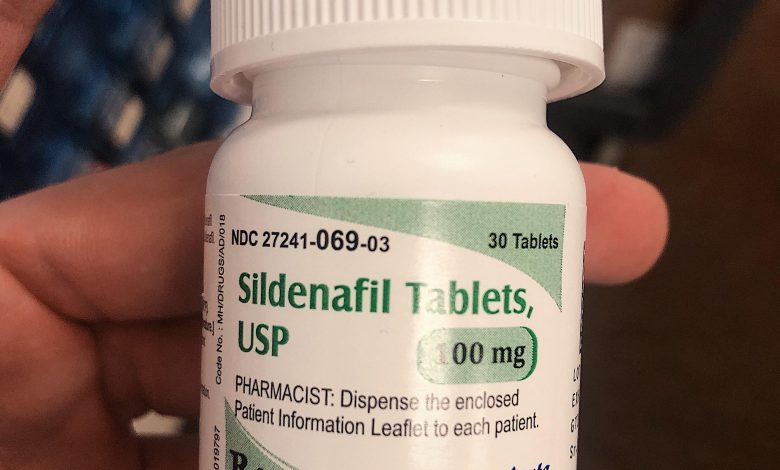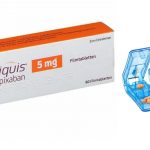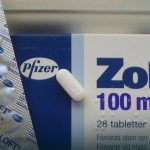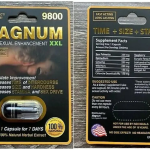Can I Cut Sildenafil 100mg In Half?

A common question that many people ask their pharmacists is, “can I split my pills?” There are a variety of reasons people want to split their pills. Some people have trouble swallowing tablets that are too big. Others cut pills in half because their healthcare provider wants them to slightly raise or lower their current dose. People also split pills to save money on medication.
Whatever the reason, cutting tablets in half is common. But not all pills can be split. Sometimes, cutting your pill in half can completely change how the medication will work.
What is Sildenafil 100mg?
Sildenafil 100mg, also known as Viagra, is a medication used to treat erectile dysfunction (ED) and pulmonary arterial hypertension (PAH). It is a phosphodiesterase type 5 (PDE5) inhibitor that works by increasing blood flow to the penis, allowing men to achieve and maintain an erection. In this article, we will discuss the uses, dosage, side effects, precautions, and other important information about sildenafil 100mg.
Sildenafil 100mg is primarily used to treat erectile dysfunction in men. Erectile dysfunction is a common condition in which men have difficulty achieving or maintaining an erection during sexual activity. It can be caused by various factors such as stress, anxiety, depression, diabetes, high blood pressure, and cardiovascular disease. Sildenafil 100mg helps to relax the blood vessels in the penis, allowing more blood to flow into it and causing an erection.
Sildenafil 100mg is also used to treat pulmonary arterial hypertension, a condition in which the blood vessels in the lungs become narrowed, making it difficult for blood to flow through them. This medication helps to relax the blood vessels in the lungs, improving blood flow and reducing the workload on the heart.
Dosage
Sildenafil 100mg is available in tablet form and is usually taken 30 minutes to 1 hour before sexual activity. The recommended starting dose is 50mg, but it can be increased or decreased based on individual response and tolerability. The maximum recommended dose is 100mg per day, and it should not be taken more than once a day. It is important to follow the dosage instructions provided by your healthcare provider and not to exceed the recommended dose.
Can I Cut Sildenafil 100mg In Half?
Yes, depending on the manufacturer and formulation of the tablet, it may be possible to split the tablet in half using a pill cutter or a sharp knife. However, Sildenafil 100mg tablets are typically film-coated and designed to be swallowed whole.
It’s important to note that splitting a tablet can affect its effectiveness and may result in uneven dosing. In addition, some tablets are not designed to be split, as the active ingredient may not be evenly distributed throughout the tablet.
If you are considering splitting a sildenafil 100mg tablet, it’s best to consult with your healthcare provider first. They can advise you on whether it is safe and appropriate for you to split the tablet and provide guidance on the best way to do it.
Side Effects
Like all medications, sildenafil 100mg can cause side effects. The most common side effects include headache, facial flushing, nasal congestion, stomach upset, and dizziness. These side effects are usually mild and go away on their own, but if they persist or become bothersome, you should contact your healthcare provider.
More serious side effects, although rare, can occur with sildenafil 100mg. These include sudden hearing or vision loss, chest pain, shortness of breath, and priapism (an erection lasting longer than 4 hours). If you experience any of these symptoms, seek immediate medical attention.
Precautions
Sildenafil 100mg should not be taken by men who are taking nitrates or guanylate cyclase stimulators for chest pain or pulmonary hypertension, as this can cause a dangerous drop in blood pressure. It should also not be taken by men who are allergic to sildenafil or any of its ingredients.
Before taking sildenafil 100mg, it is important to inform your healthcare provider of any medical conditions you may have, such as heart disease, high or low blood pressure, liver or kidney disease, or a history of stroke. It is also important to inform your healthcare provider of any medications you are taking, including over-the-counter and herbal supplements, as some of these may interact with sildenafil 100mg.
Sildenafil, like many medications, should be stored properly to ensure its effectiveness and safety. Here are some guidelines on how to store sildenafil:
- Store sildenafil at room temperature between 68°F to 77°F (20°C to 25°C). Keep it away from heat, moisture, and light.
- Keep the medication in its original container and store it in a dry place.
- Keep sildenafil out of the reach of children and pets.
- Do not store sildenafil in the bathroom or near the kitchen sink where it could be exposed to moisture or heat.
- If you have unused or expired sildenafil, dispose of it properly by following your local laws and regulations.
It’s important to note that you should always check the specific storage instructions on the medication label or consult with your healthcare provider or pharmacist if you have any questions or concerns about storing sildenafil.





